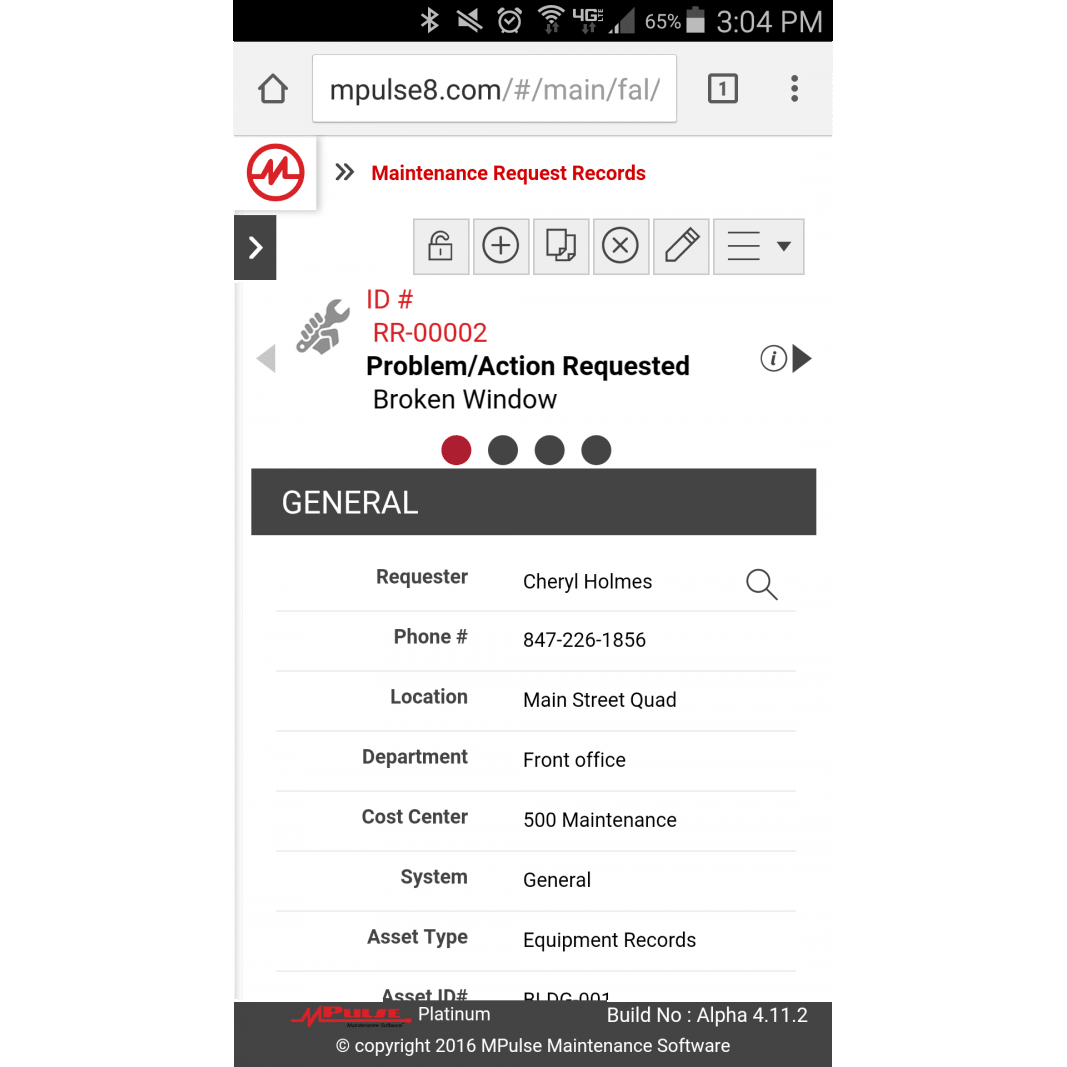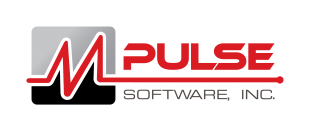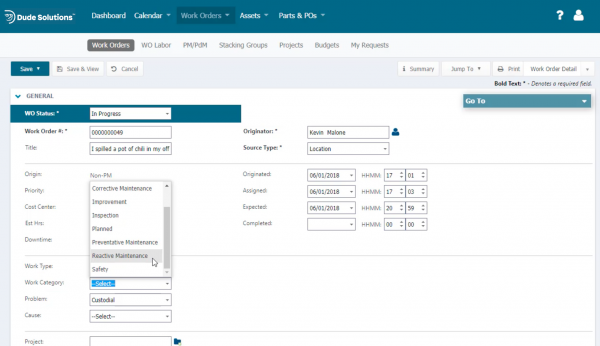Why You Need Both Corrective and Predictive Maintenance
We recently demonstrated how a predictive maintenance (PdM) strategy can eliminate 75 percent of breakdowns by using real conditions to perform repairs only when necessary—Gartner says the most effective teams use this method to reach higher levels of maintenance maturity. (Full content available to Gartner clients.)
Teams using condition-based monitoring for predictive maintenance will lead the way in efficiency and flexibility, but without a strong corrective work order system to supplement PdM, companies spend too much labor time and money keeping assets running.
Don’t let emergency breakdowns send your team out of whack—here are three reasons why corrective maintenance is a necessity, and three ways to plan for unplanned work.
3 Reasons Why You Need PdM and Corrective Maintenance
Bruce Breeden, principal consultant and field service practice leader at Mobile Reach, has more than 30 years of asset management, maintenance and field service experience. He says the need for unplanned work is always needed, even if you have a sophisticated preventive or predictive maintenance system.

Bruce Breeden
Principal consultant, field service practice leader at Mobile Reach
“Doing preventive maintenance and calibrations, or scheduled maintenance, is heavily related to the product that you’re working on. I can’t imagine any services business that doesn’t provide reactive services.”
Here are a few reasons why:
1. Emergency Work Will Always Be Necessary (And Is Costly to Ignore)
In 1979, John Day of Alumax won several awards for his pioneering work to establish important KPIs and developing his own preventive maintenance system, before dedicated maintenance software was common.
In the process, he created the concept of the 6:1 Rule of Preventive Maintenance, which says that for every six preventive tasks completed, one corrective repair should occur.
Does this rule hold up with today’s technology and maintenance philosophies? It’s a useful tool to gauge your maintenance mix, but the problem comes when organizations try to stick with the ratio, but ignore the external variables that impact your PM planning.
“The characteristics of the facility and equipment, how they’re used and serviced, will adjust the ratio itself,” Breeden says. “But the principle behind it is solid—whether it’s 8:1 or 3:1 will vary by those factors.”


Mobile work orders help technicians submit emergency requests quickly, anywhere, like the mobile version of mPulse (Source)
Expensive machine downtime will eat into your budget, but an effective work order system minimizes these costs and helps you understand and improve your maintenance ratio.
2. Reveal Failure Details By Tracking Corrective Work
Without using a work order system to collect information for each task, you’re missing the value of years of historical maintenance data. This data will reveal trends you can address to improve your corrective and preventive strategies in some key ways, such as:
Gain greater understanding of how failures occur for each asset and how they impact other equipment.
Identify more effective repair instructions that reduce wear and extend the useful life on machines.
Optimize your preventive maintenance schedule by using historical data to reduce unnecessary PMs.
Breeden says if you’re not using the corrective maintenance tasks to also gather information about the equipment, you won’t get the quality data necessary to make significant improvements over time.
“The reason for a work order system is to capture the information that can lead to a better result,” he says.
Today’s software is able to leverage data from historical repairs to build up knowledge about failures, so each asset can have an individual plan and your technicians can spend more time proactively preventing failures instead of checking off a list of useless PMs.
Through this process, you’ll be able to create failure codes that help technicians complete common repair tasks accurately and consistently, and over time, reach a more effective maintenance ratio.
3. Corrective Maintenance Is More Appropriate for Certain Assets
Don’t move each and every piece of equipment to a scheduled maintenance plan. Sometimes it’s better to let assets fail instead of adding a dozen more PMs to your calendar.
There could be several reasons you decide to keep some equipment on a run-to-failure strategy:
If the failure doesn’t cause safety hazards or expensive breakdowns.
If it’s cheaper to let the asset fail than spend labor time with inspections.
If the machine is in a tight or hard-to-reach space that prevents frequent checks.
If the asset has several redundancies.
Light bulbs are often used as a common example of something to let fail—In most cases, a light going out doesn’t causes big problems, preventive maintenance won’t keep the bulb running longer and they’re an inexpensive fix. Other non-critical assets may share these qualities.
However, Breeden says your maintenance data should inform these decisions.
“All the data captured shows how often I do change that lightbulb, and it may make sense to change a lightbulb while you’re there because you know it’s going to go out soon,” he says.


Modern work order systems, such as Asset Essentials, offer preset priority levels for each job so you can measure your maintenance ratio (Source)
Tracking the data for each corrective action and prioritizing assets shows you which equipment needs close attention and helps you remove PMs that don’t boost reliability.
Set Up the System to Handle Corrective Work Easily
Breeden says maintenance teams can take these three steps to make sure your ready for any corrective repairs:
Build the work order system to capture valuable data: Build up a vast set of data to analyze and take cost-saving actions. Customize the fields on WOs to capture the specific information you want during each task.
Empower technicians to do the best work: Give workers access to relevant OEM documents and manuals, historical repair notes about the equipment and communication channels with other techs while using the work order system.
Mobilize your system on smartphones and tablets: Mobile devices make all of this easy—workers in the field can access the functionality of the CMMS, but also use the phone or tablet to take photos or videos, utilize GPS data, timestamp important actions or use QR or barcodes.
Providing a means for condition monitoring to feed real-time data into your system means the assets can tell you when they need serviced instead of a calendar. We have more research about smart maintenance, predictive maintenance benefits and asset performance to help you map out your strategy.
Or, if you want a helping hand finding the right maintenance technology, call our advisors at (855) 998-8505 for a free consultation to narrow down your options in less than 15 minutes.
Note: The information contained in this article has been obtained from sources believed to be reliable. The applications selected are examples to show a feature in context, and are not intended as endorsements or recommendations.